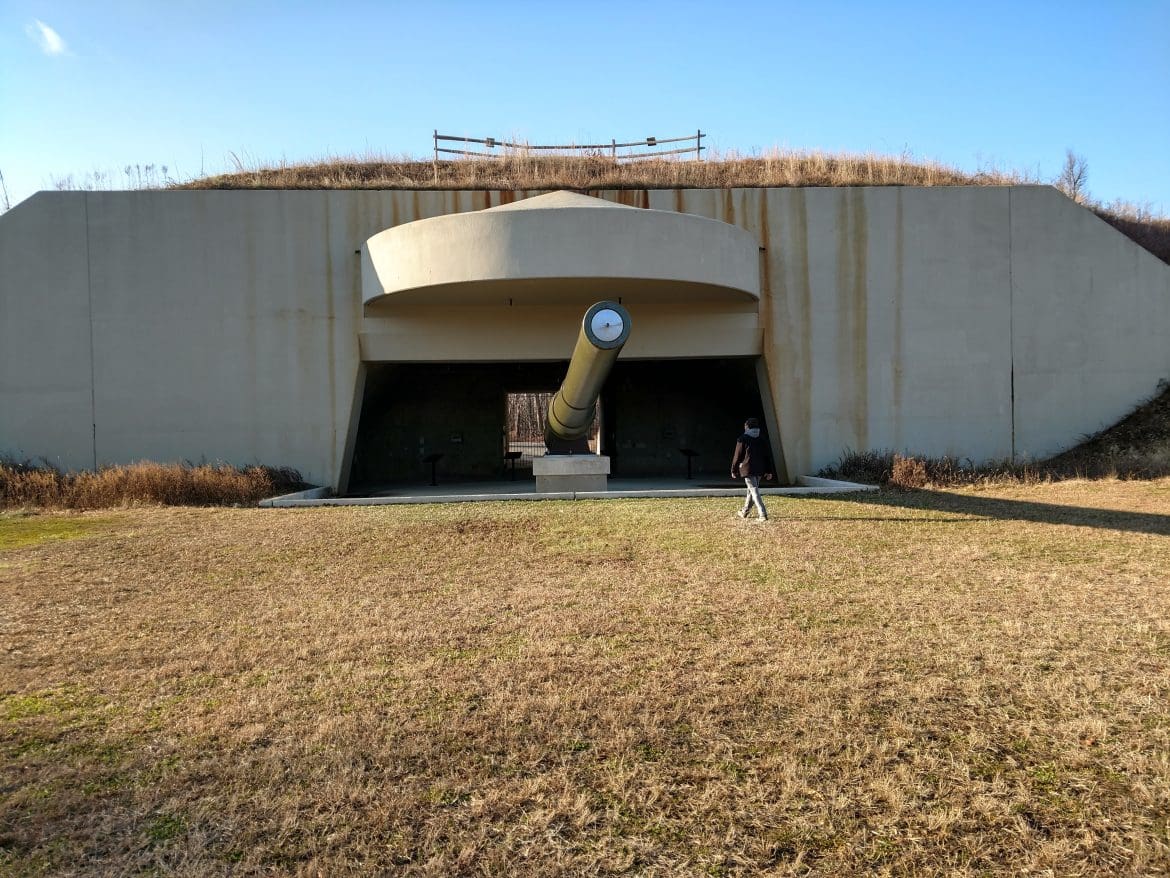New Jersey has a long, proud military history. What comes to mind most often is our prominence in the Revolutionary War. However, in 1917, The Bethlehem Loading Company created the South Jersey town of Belcoville and built a military proving ground and munitions plant in the forest of Atlantic County. This facility became an important supplier of artillery for World War 1. Now, over one hundred years later, the ruins of this site which once employed over 6,000 workers, are part of Estelle Manor Park – a jewel in the Atlantic County Park System with over 27 miles of hiking trails.
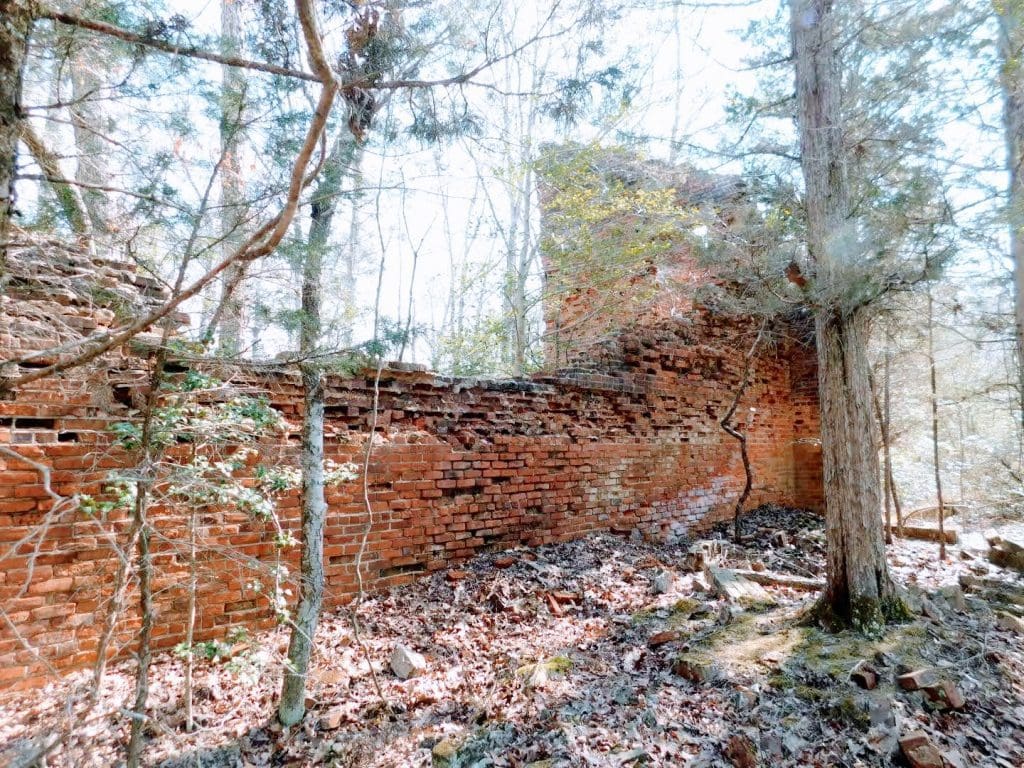
Estelle Manor Bethlehem Loading Co Plant Remains | Photography by Sue Fajgier
Closing NJ Military Bases
New Jersey, with its miles of coastline along the Atlantic Ocean, has always been an ideal spot for military installations suited to both defensive and offensive purposes. By the end of 1943, the United States boasted; 345 main military bases, 116 subbases and 322 auxiliary fields – with New Jersey as a large stakeholder. Currently, New Jersey is home to six active military bases; two Army, one Navy, one Air Force and two Coast Guard. But what happens once the need for a military outpost no longer exists? What becomes of all that valuable land once the federal government has left?
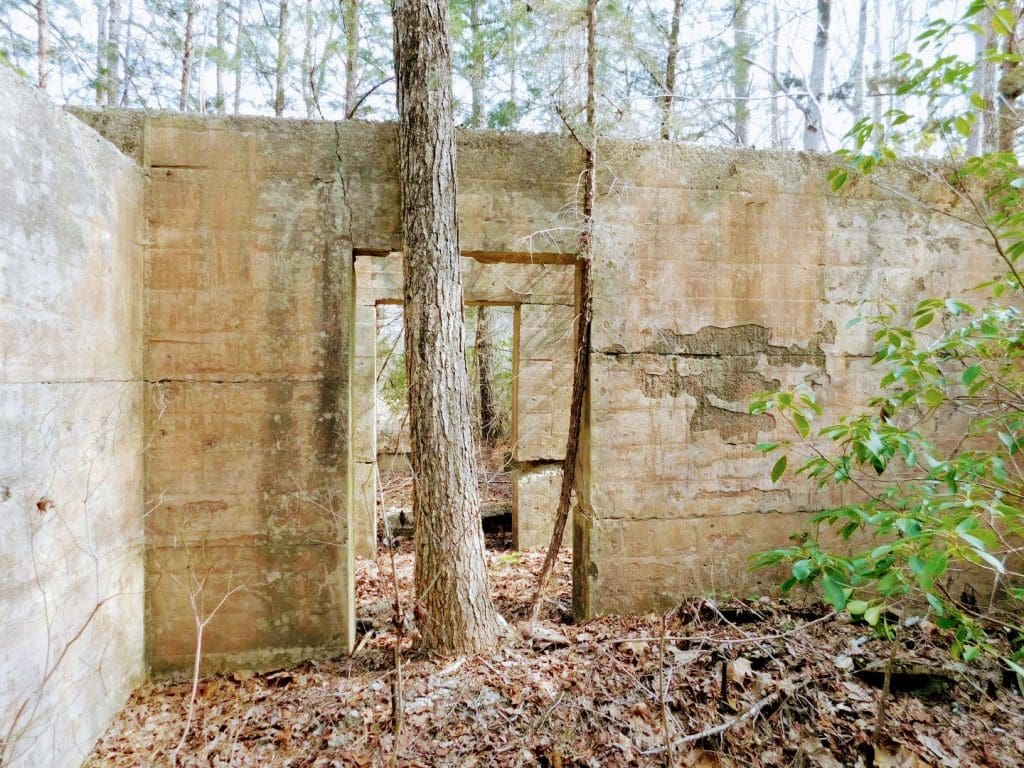
Estelle Manor Bethlehem Loading Co Plant Remains | Photography by Sue Fajgier
The Base Reassignment and Closure Process (BRAC) has become a lot more complicated and regulated since World War 1. These days the process is run through the federal government and since 2005, Congress has been resistant to adding any bases to the list. Officially, New Jersey has had six BRAC closures since the process was implemented. Although the original land use was strictly military, it’s interesting to see the creative and diverse ways our state has chosen to repurpose these once-government lands.
Camp Kilmer (Piscataway)
Camp Kilmer was activated in 1942 and used in World War 2 as a point of embarkation for the troops; this 1,600-acre base was located in Piscataway Township. Named for the New Brunswick area poet, Joyce Kilmer, who died in World War 1 (I think that I shall never see, a poem as lovely as a tree) the base was active until 1949. This location was reactivated for the Korean War and was used as a temporary facility by FEMA after the 9/11 attack.
Part of the facility was sold in 1964. Rutgers University acquired 540 acres for the Livingston College campus of the university. As a Rutgers student in the 1980s, I fondly recall driving around campus and seeing numerous old military buildings still lining the roads. Part of my college education included learning the word “Quonset hut.” In addition to Rutgers University, the Edison Job Corps and Timothy Christian School still use parts of the old base in an upgraded extant structure.
Battery Lewis/Navesink Military Reservation (Middletown)
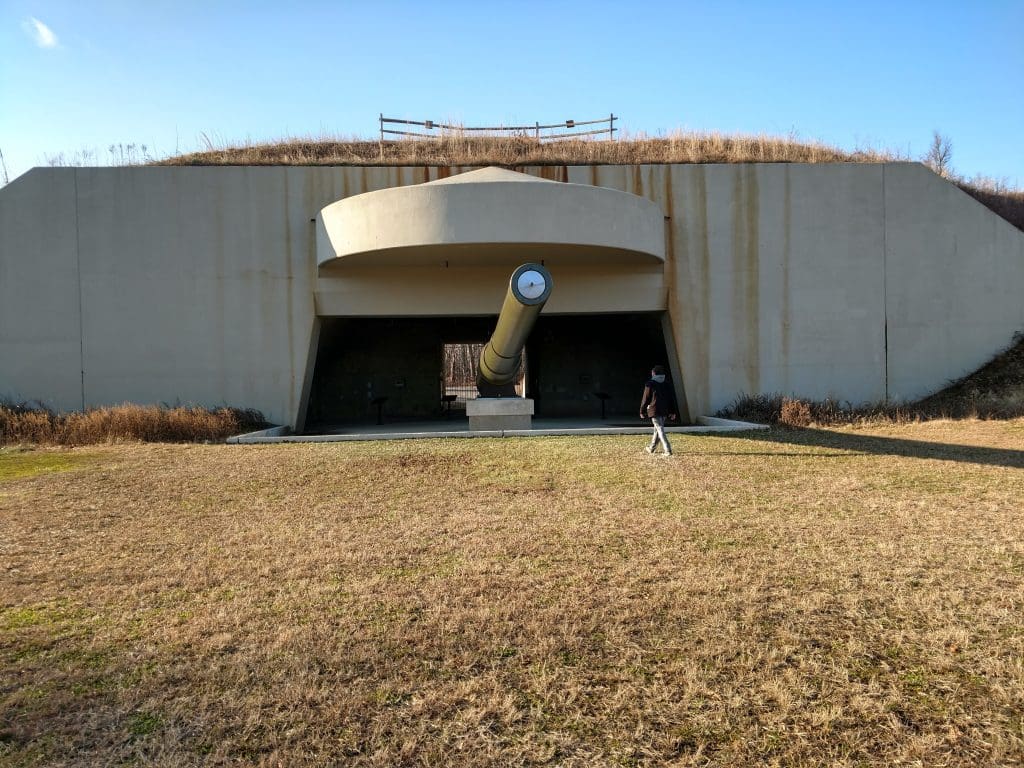
Hartshorne Woods Lewis Battery | Photography by Sue Fajgier
In 1942, the Army built Navesink Military Reservation as an extension of Fort Hancock to house 6-inch and 16-inch gun batteries overlooking the Atlantic Ocean. This 245-acre site was then used in 1950 by the Air Force for Cold War surveillance. In 1958 the Army installed Nike missiles and this location was a key control site for the program.
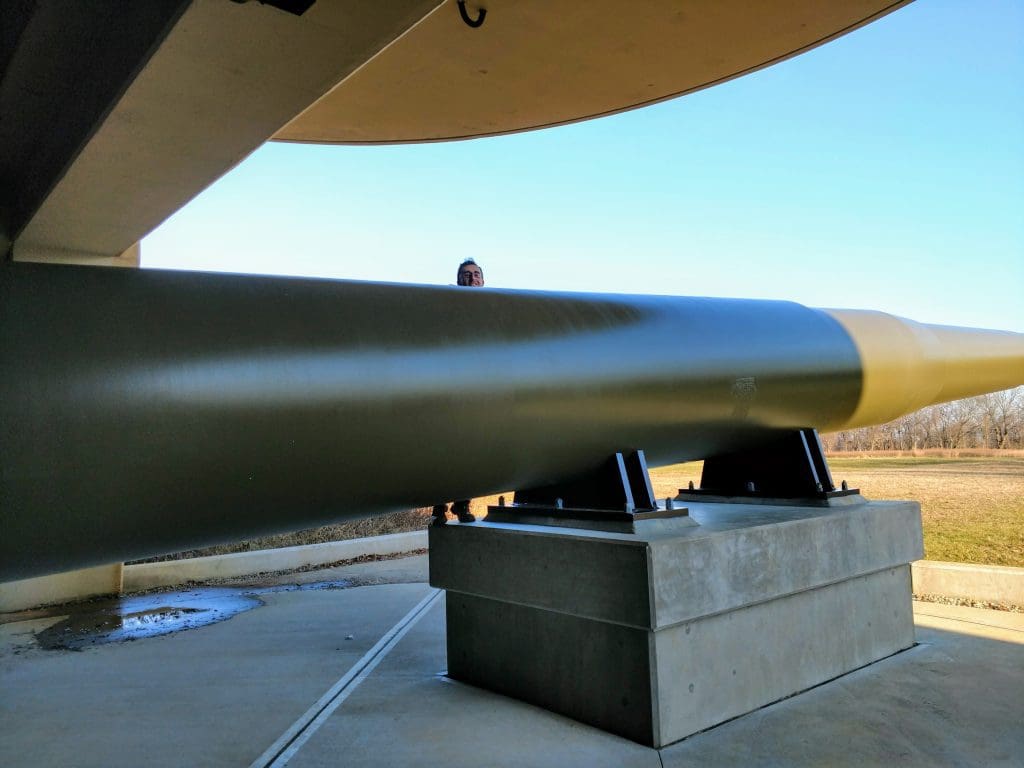
Hartshorne Woods Lewis Battery | Photography by Sue Fajgier
By 1974 the defense of New York Harbor was no longer a military priority from this location and the base was decommissioned. Monmouth County purchased the site and it is now home to Hartshorne Woods Park. The park is 747 acres and features numerous trails for hiking, biking and horseback riding. The trails climb hills and even take you up to the old gun batteries. The views of the Atlantic are stunning on a clear day. Tours are offered of the Battery Lewis through the Park Service.
Fort Hancock and Sandy Hook Proving Ground (Middletown)
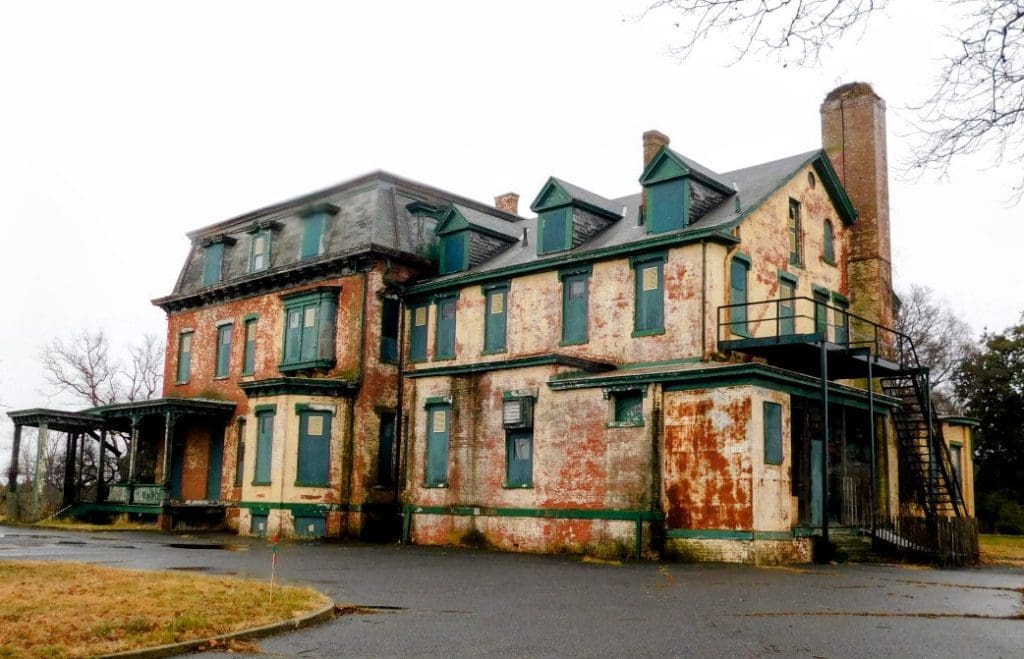
Sandy Hook, A Work in Progress | Photography by Sue Fajgier
Based on location, Sandy Hook is an important strategic military location. The deep water channel lies just off the coast of lower Manhattan. Important as far back as 1774 when the Sandy Hook Lighthouse was erected; this is the oldest operating lighthouse in the US. The advantages of this inlet were leveraged in the War of 1812, the Spanish-American War and numerous other military operations throughout history. Construction of the gun batteries began in 1890. Fort Hancock was officially named in 1895 and peaked during World War 2 when 7,000 soldiers populated this base.

Sandy Hook View of NYC | Photography by Sue Fajgier
Decommissioned in 1974, this former military installation is now known as Gateway National Recreation Area and is a 27,000-acre jewel in the National Park System. There are miles of beaches that are as diverse as the usage this land has seen – from the rocky coast along the bay, where in recent years, the seals have come to migrate and play along our shores in the winter months, to the soft beaches of the Atlantic for sunbathing and ocean dips.
From Proving Ground to Playground
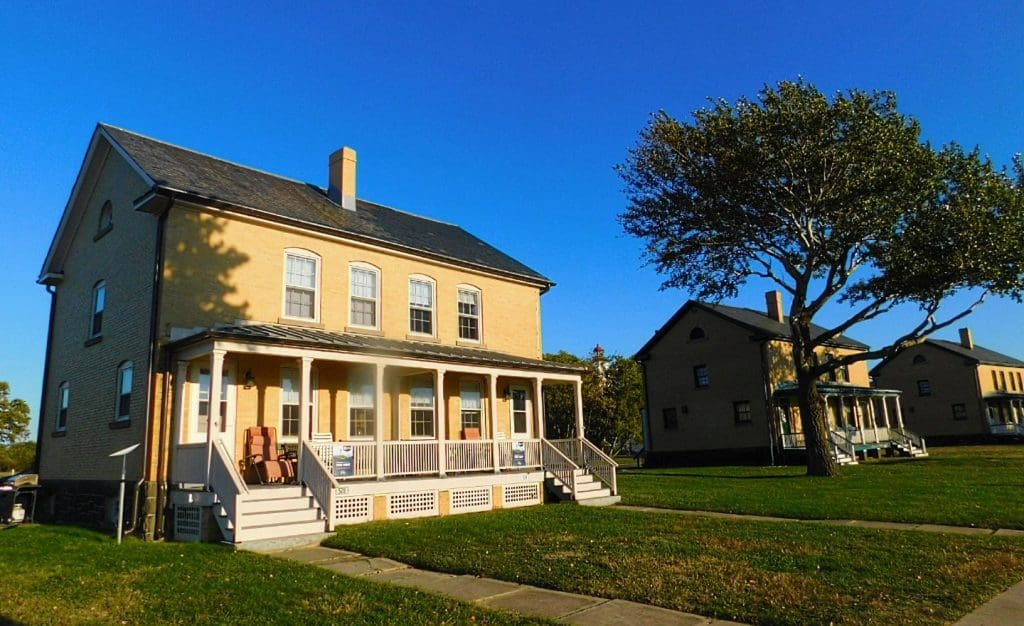
Sandy Hook Officers Row Rentals Available | Photography by Sue Fajgier
Between 1905 – 1909, the 18 houses we now call “Officer’s Row” were built for married Army officers. These homes still remain in varying stages of repair. In the early 2000s, developers began restoring some of these units and now there are several available for rent through private companies/individuals. Having been lucky enough to visit one of these units – I can honestly say it is truly a treasure to have kept these structures instead of tearing them down. The natural wood, exposed brick walls and all the small details make this an architectural delight.The Park Service has restored a History House that is staffed by Rangers so everyone can have this experience and peek inside.

Sandy Hook Deer | Photography by Sue Fajgier
In addition to seal watching, Sandy Hook is home to an abundance of wildlife. The deer that populate this inlet are smaller than the deer on the mainland. Hiking along the trails, you may also spot red fox, rabbits and raccoons. Each Spring over 4,000 different birds stop at Sandy Hook as they migrate home. How lucky we are to have this decommissioned base in our state.
Camp Evans (Wall)
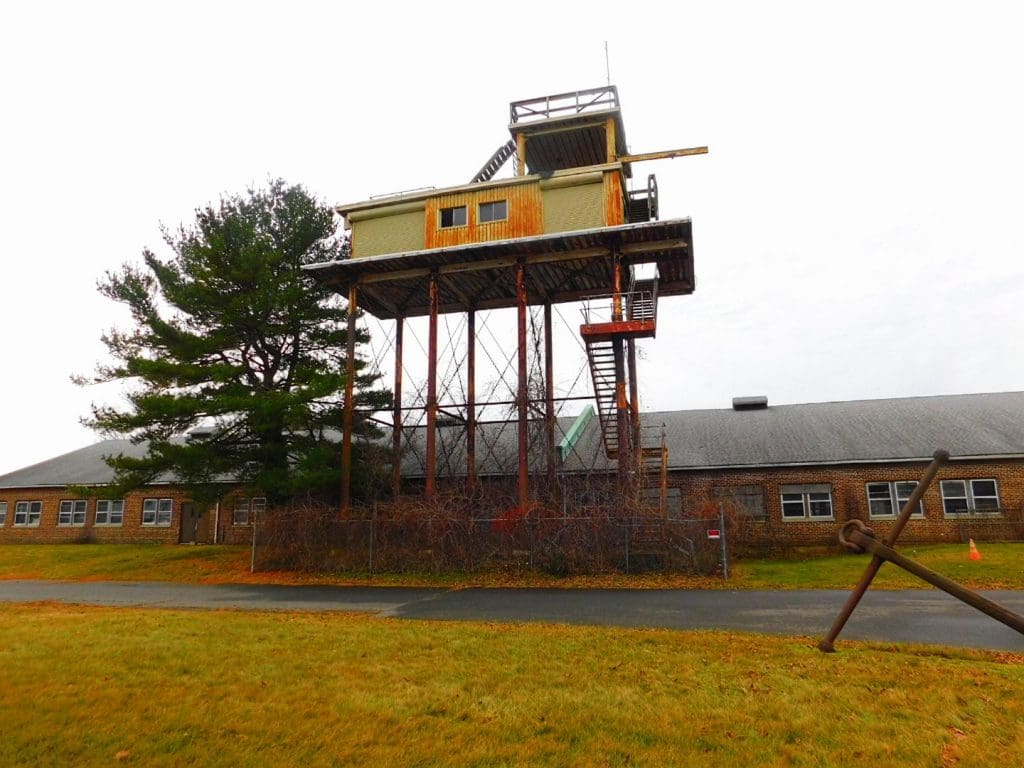
InfoAge WIP | Photography by Sue Fajgier
In 1912 Guglielmo Marconi built the Marconi Wireless Telegraph Company building in Wall to use as a research site for his “new” invention. During World War 1, the Army seized this strategically valuable location, renamed it Camp Evans, and used it as a vital piece of their communications network.The Army Signal Corp. found this the ideal spot for their secret radar technology research during World War 2 and beyond. Signals from Camp Evans have actually bounced off the moon.
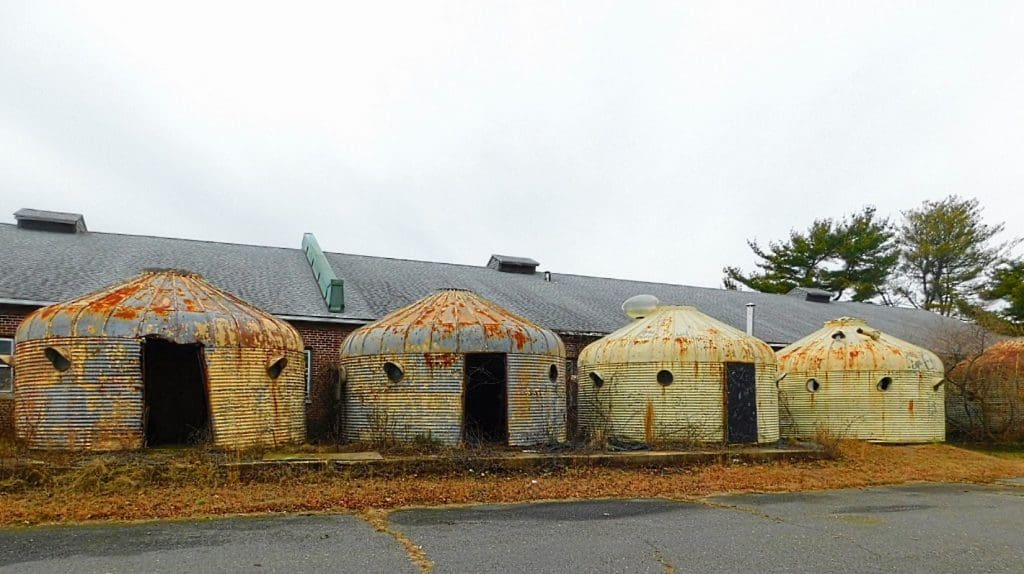
InfoAge Huts to be Repurposed | Photography by Sue Fajgier
In 1998 this base was decommissioned through the BRAC process, and yet many of the structures built, like the Marconi Hotel, still remained standing. In 1999 a group of individuals formed a 501c to build a consortium of museums that would become known as InfoAge Science and History Center.The vision was to repurpose these structures and fill them with STEM-focused educational exhibits to inspire the next generation of New Jersey’s students to create wonders like Marconi.
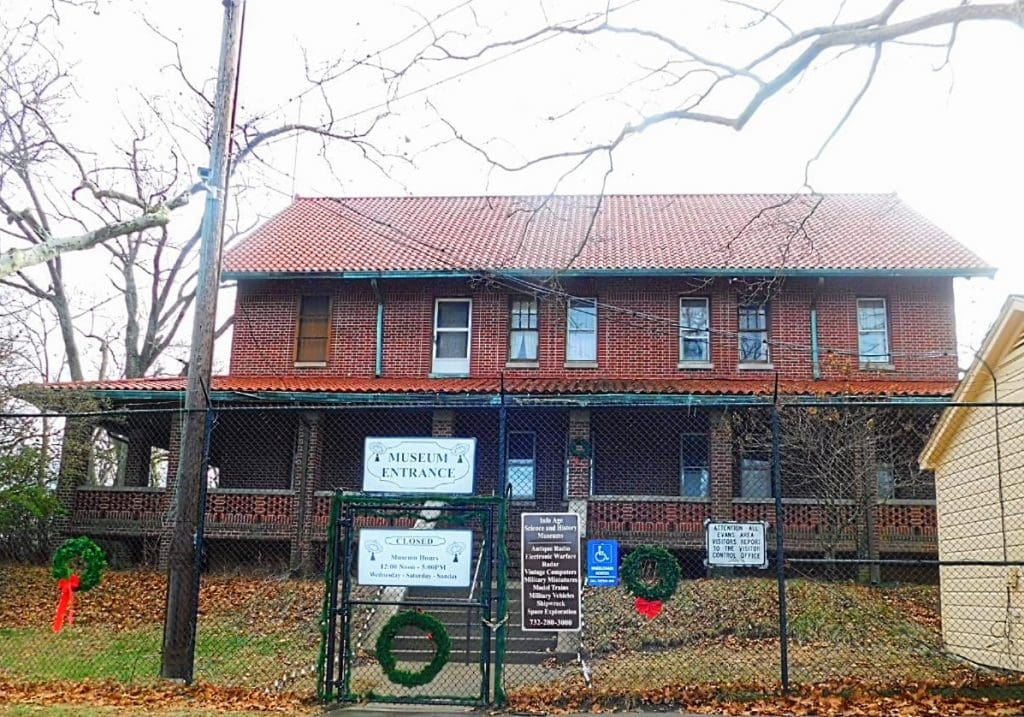
InfoAge Marconi Hotel | Photography by Sue Fajgier
Opened in 2005, InfoAge Science and History Museum is now home to over twelve different museums, each maintained and staffed by knowledgeable volunteers. Each museum is responsible for renovating and maintaining its own unique space.
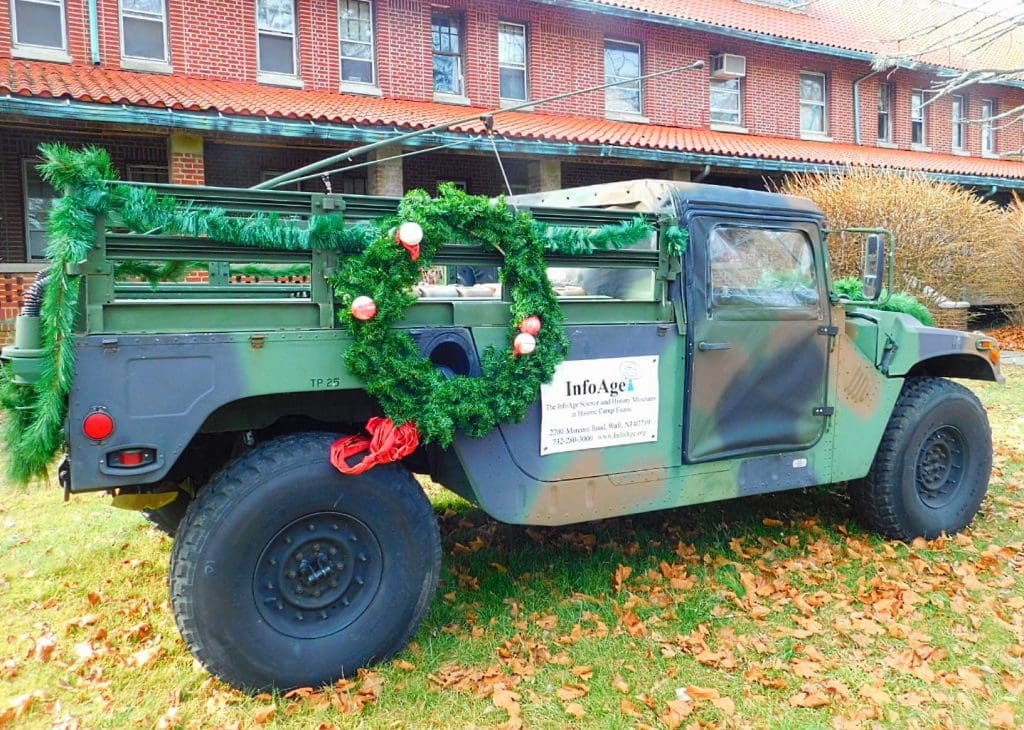
InfoAge Entrance | Photography by Sue Fajgier
Current occupants include; the Space Exploration Center, Radio and Communications Technology, Trains, Computers, New Jersey Shipwreck Museum and my personal favorite – Military Technology which includes more military vehicles than the Smithsonian. The repurposing of this former “secret” military site is truly genius.
Fort Monmouth (Eatontown)
In 1917, the Army took over the land that was formerly the Monmouth Park Racecourse and commissioned Camp Vail. The Signal Corp joined them here in 1924. In 1925 the base was renamed Fort Monmouth. Like their neighbors over at Camp Evans, radio technology was an important new technology being studied for military applications. The Army’s first radio-based aircraft detection and ranging system (later called RADAR) was actually developed at this site.
During the peak of World War 2, Fort Monmouth was home to 1,559 officers and 19,786 enlisted personnel. But perhaps the most exciting story to come out of this base is the story of Julius and Ethel Rosenberg. Julius was employed at Fort Monmouth when he was accused and convicted of spying.
Reenvisioning the Base
The base remained in constant use by the military until 2011, when it was closed through the BRAC process. At that time, the Fort Monmouth Economic and Revitalization Authority (FMERA) began working on plans for the site. New Jersey City University had been using the campus, but recently enrollments dropped and they contemplated leaving the site. FMERA sent proposals to Netflix, with an eye towards attracting the film industry across the river to New Jersey by offering tax credits. In December 2022, Governor Phil Murphy announced that an $849 million dollar production facility was being built on the site of Fort Monmouth as a Netflix production facility. The former military base will now be home to 292 acres of soundstages and recording studios used by Netflix to entertain and delight the world.
Much More than Movies
In addition to the Netflix deal, there’s a lot more happening at the base formerly known as Fort Monmouth. Currently, 86% of this 1,126-acre tract is under some form of development. One of the biggest deals concluded recently is with Robert Wood Johnson Barnabas Health for the construction of a medical campus, including a cancer center, ambulatory care, medical office and potentially a new hospital. The FMERA Annual Report is full of exciting developments above and beyond Netflix. “This state-of-the-art project will provide expanded access to exceptional care and offer important health,education and wellness services for the entire community,” said FMERA Executive Director Kara Kopach.
Full Circle – Repurposing NJ’s Military Bases
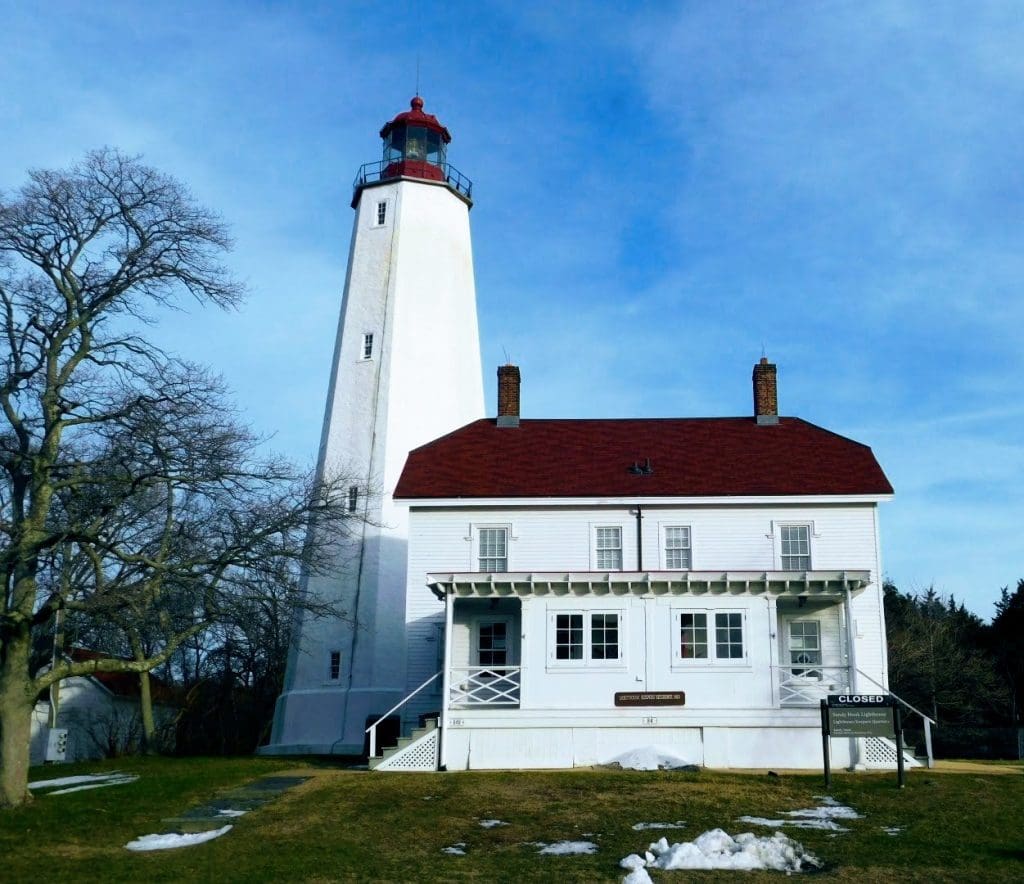
Sandy Hook Lighthouse | Photography by Sue Fajgier
New Jersey has always been a state that has risen to the occasion during times of war and military conflict. During the Revolutionary War, at least 18,000 men fought in either the Continental Army or militia units. Washington crossed the Delaware here! So, it isn’t surprising how many military bases and auxiliary sites existed on our soil. It’s interesting to note the varied ways creative thinkers have come up with now to repurpose these valuable lands into something for the public good. From parks to museums to million-dollar movie studios – we are finding ways to share the beauty of our coastlines and forests in peacetime. Wouldn’t it be really cool if Netflix did a feature about the Rosenbergs as one of their new projects at Fort Monmouth?
About the Author/s
Sue graduated from Rutgers University with a B.A. in English back when you could still get a degree for reading great literature. She spent nearly 40 years working in the Sales & Marketing field with companies ranging from non-profits to small businesses to Fortune 100 Corporations. Most recently retired after nearly 20 years with S & P Global, she is now free to pursue her true passions for hiking, writing and photography. Sue was born and raised in New York State. As a New Jersey transplant, her passion for the special blend of culture and nature that is uniquely Jersey is what Sue loves to share with the world. She has one grown son that she is insanely proud of. Her husband of many decades is an amazing partner both in life and hiking. When not out exploring, Sue is most likely at home reading a novel with her dog.
